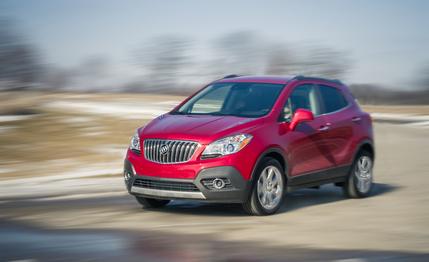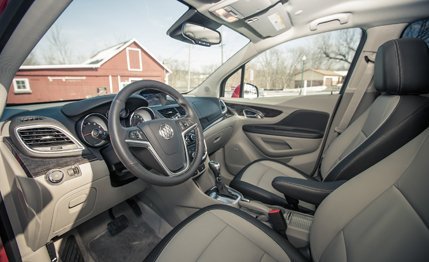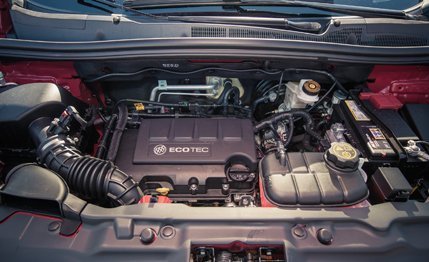 Instrumented Test
TESTED
Instrumented Test
TESTED
Buick’s new Encore sub-micro hatchback/crossover invites a lot of questions. First of all, what is it? Well, it’s an answer to a question asked by buyers in China, where Buick thrives. It shares major mechanical pieces with the Chevrolet Sonic, which might, in the eye of a bigger-is-better American public, cast a pall of cheapness over it. So why is Buick offering America a crossover built in South Korea and based on a bite-sized Chevy?
With that question, the lid on Pandora’s box flips open. Why does anything unexpected happen in the auto industry? Why did the Nissan Murano CrossCabriolet happen? Why does the BMW 6-series Gran Coupe—a sedan version of a coupe based on another sedan—exist? We can say with certainty only that every brand is looking for new customers, Buick perhaps more desperately than others. Thus, the important question is: Will the Encore bring new buyers to Buick here in America?

The short answer: Yes. The brand has never offered anything like the Encore, and there’s much to like. It’s roomy for four, and its high seating position gives drivers a nice view of the road ahead. It can be fuel efficient, with an EPA rating of 25 mpg city/33 highway for front-wheel-drive models. (All-wheel-drive Encores are rated for a slightly less impressive 23/30 mpg.) The front-suspension struts and a torsion-beam rear axle are tuned to supply a Germanic discipline to the ride and excellent isolation from the road surface’s various failings. The electric power steering is unexpectedly proficient, being quick, weighty, and linear.
Though smooth, the Encore’s turbocharged 1.4-liter four-cylinder makes only 138 horses. We call a 0-to-60-mph time of 9.3 seconds slow—and that’s the lighter front-drive model. We call the all-wheel-drive model’s 10-second trip to 60 mph glacial. During full-throttle acceleration, shifts seem to take as long as a Super Bowl commercial break, causing a dramatic interruption in power. Downshifts are agonizingly slow. There’s a rocker switch atop the shift lever for manual shifting, but most drivers would probably use it more if it tied their shoelaces together.

The Encore has a capacious 19 cubic feet of cargo space behind the second row and 48 with those seats folded. While the high roof gives it plenty of head- and legroom front and rear, the Encore is narrow. It technically seats five people, but the only way three passengers will fit across the back is if the middle one is a stick figure. And while the front windows offer the outward visibility of a glass house, people in back have a view akin to the rabbit’s from the magician’s hat.
Viewed in a vacuum, the Encore is unexpectedly good. Force it into the context of the modern automotive landscape, though, and it’s harder to explain. A base price of $24,950 isn’t much money, but comparable cargo space and fuel economy can be had for less in a number of cars, including the Ford Focus and VW Golf. And despite its lofty EPA ratings, we saw only 24 mpg with both drivelines due to our desire to get places expeditiously.
For the roughly $32,000 of the two Encores we tested, you could get a no-option Audi A3 TDI. If you want upscale roominess in something tall, though, there aren’t many choices at this price. The Audi Q5 starts at nearly 37 grand, and the BMW X1’s roofline is almost five inches lower. While this bitty Buick is weird and slightly expensive when loaded up, it does what all brands seeking new customers desire, which is to fill a void in the market. Next question, please.